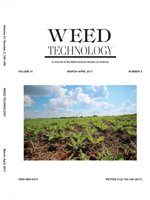The introduction of soybean and cotton traits with resistance to synthetic auxin herbicides has led to an increase in concern over the off-target movement of dicamba and 2,4-D. A direct-mail survey was sent to Missouri pesticide applicators in January of 2016 to understand current herbicide application practices and applicator knowledge and awareness of the new synthetic auxin technologies. Completed surveys were returned by 2,335 applicators, representing approximately 11% of the state's registered pesticide applicators. Survey data reported herein provides information regarding current pesticide applicator knowledge and practices and highlights areas that need more emphasis during applicator training. Overall, survey respondents were familiar with physical drift and methods to minimize that risk. However respondents were less familiar with volatility and temperature inversions, which can each influence off-target herbicide movement. Of the 427 commercial applicators and 1,535 noncommercial applicators who answered questions regarding volatility, 81% and 74% respectively, recognized that high temperatures can contribute to a herbicide's ability to volatilize. However, only 48% and 39% understood that a herbicide's vapor pressure influences volatility. Answers from the survey indicate further education is needed on the synthetic auxin technologies, such as what herbicides can be used with each technology, proper methods for inspecting and cleaning spray equipment, and the importance of reading herbicide labels. When asked whether applicators were aware of the new 2,4-D-resistant and dicamba-resistant traits, 76% of 443 commercial applicators and only 40% of 1,713 noncommercial applicators selected “yes.” Additionally, survey results suggests that current methods aimed to facilitate communication among producers and applicators, such as FieldWatch and Flag the Technology, may not be successfully adopted, at least in Missouri. Findings from this survey can be utilized to enhance training of pesticide applicators in preparation for the synthetic auxin herbicide technologies.
Nomenclature: dicamba; 2,4-D; cotton, Gossypium hirsutum L.; soybean, Glycine max (L.) Merr.





